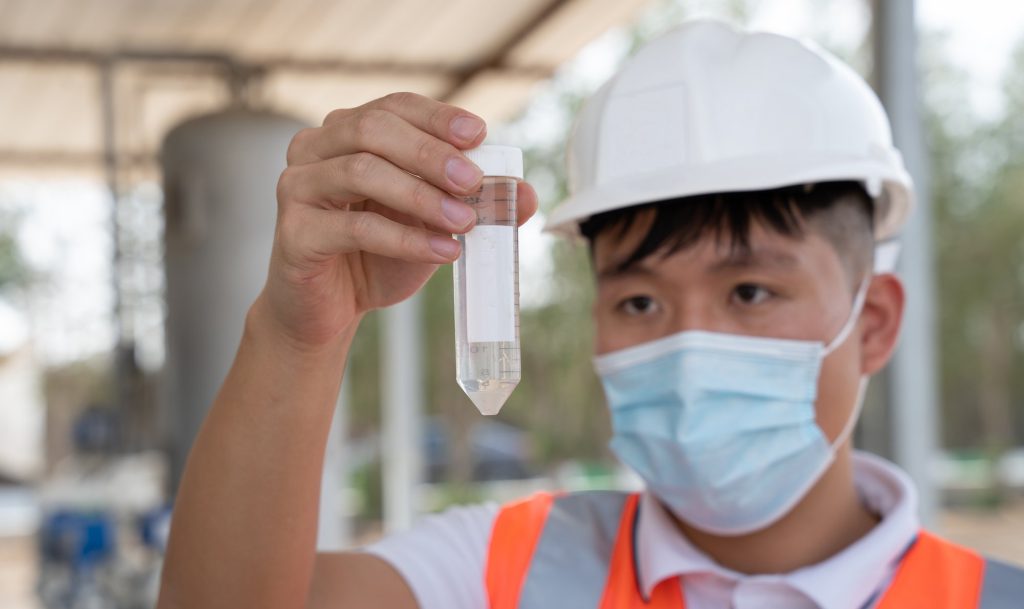Saudi Arabia’s climate is extreme—the country is working to maximize and reuse its most precious resource: water. And that includes wastewater.
Most of Saudi Arabia’s wastewater (the waste that makes it to the waste treatment facility) is cleaned using aerobic processes. Oxygen is provided, which supports the growth of aerobic microorganisms to break down organic matter. The issue with the aerobic treatment is that it is energy intensive and the volume of sludge produced daily is costly to dispose of.
KAUST Associate Professor Peiying Hong has developed an alternative that solves both issues using her anaerobic membrane bioreactor (AnMBR) technology. The AnMBR is energy-neutral and produces at least 10x lower sludge volumes. The water produced can be used to support landscaping and farming.
After receiving a KAUST Research Translation Grant of USD $1million, Professor Hong partnered with the Saudi Authority for Industrial Cities and Technology Zones (MODON) to turn a prototype for her development into a pilot program for her anaerobic wastewater treatment process in Jeddah, Saudi Arabia.
An industry partner to commercialize a prototype
Hong’s first version of the AnMBR was a prototype built in her lab and then another, larger 35-liter version installed in KAUST. In it, microorganisms convert organic carbon into methane, and the treated water is then filtered through a microfiltration membrane. However, the filtered water still contains ammonium that cannot be disinfected effectively using a traditional chlorine process. To overcome this, the water is disinfected using UV light and hydrogen peroxide and then goes through a final step of activated carbon filtration. The output is clean water suitable for non-potable purposes.
The new system also has a smaller site footprint than existing processing plants. It’s particularly suitable as a decentralized wastewater treatment option, which, Hong says, “minimizes the energy costs related to distribution and transport.” This new technology has the potential to be deployed as a commercially viable and innovative decentralized wastewater treatment system. Still, Hong needed funding and industry interest to make that a reality.

The next step: piloting a wastewater treatment facility in Jeddah
Both KAUST’s Research Translation Grant program and industry networks made it possible for Hong’s prototype to become a pilot-scale bioreactor built with local industry leader MODON in Jeddah. The pilot reactor is currently operational at the MODON site.
Kevin Cullen, vice president of KAUST Innovation, said, “The relationship between KAUST and MODON is an excellent example of how universities and industrial partners can work together to solve challenges and improve existing processes and technology.”
The MODON-pilot plant will treat 25,000 to 50,000 liters of wastewater per day. The AnMBR built at such a scale will be the first demonstration of cleaning wastewater with minimal energy costs in the region. By reusing the high quality treated wastewater, it also reduces the need to produce more desalinated water for landscaping or crop irrigation, ultimately reducing energy consumption and carbon emissions.
Professor Hong says, “The MODON site will demonstrate the entire anaerobic membrane bioreactor system, coupled with an appropriate disinfection strategy. We want to demonstrate the whole process in terms of its energy costs and its operating costs. Our goal is to understand if it can be more competitive compared to the existing treatment technologies.”

A zero-energy, recycled wastewater future
Future urban environments will have to become more sustainable and recycle water more efficiently to cope with a warmer climate and the water stress caused by growing populations. Water reuse is therefore one of the key objectives of Saudi’s Vision 2030. Promoting water reuse at zero energy cost would help achieve the overall environmental sustainability of this objective.
The AnMBR is an example of the practical and usable technology developed at KAUST and its ability to partner with other innovative organizations, like MODON, to implement this technology at scale to calibrate it in real-world conditions. The technology could also be exported to other countries when it is proven commercially viable.
To learn more about how to scale your research, get in touch with KAUST Technology Transfer Office.

